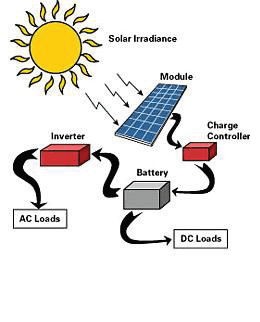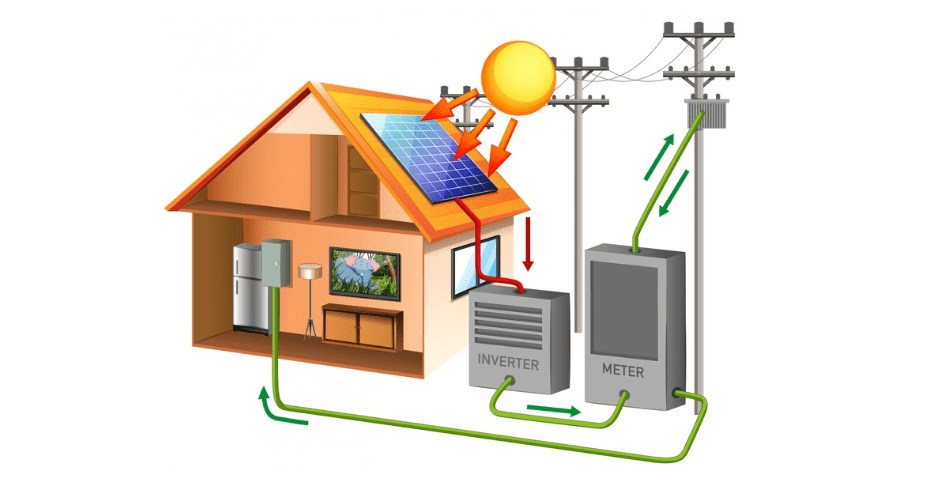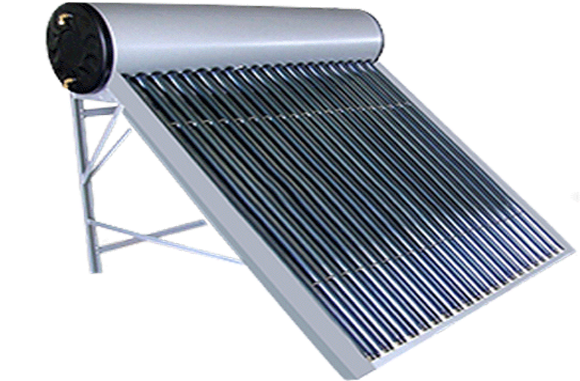In recent years, the global focus on renewable energy sources has intensified, with solar energy emerging as a leading contender in the quest for sustainability. Solar power offers a clean, abundant, and renewable alternative to traditional fossil fuels, making it a pivotal component in the transition towards a greener future. In this blog post, we provide knowledge of working of solar energy, its numerous advantages, and examine some of the key government initiatives driving its adoption worldwide.
Table of Contents
ToggleIntroduction
Solar power is defined as the direct conversion of sunlight into form of electricity with the help of Photovoltaic (PV) or by Concentrated Solar Power (CSP).In PV, semiconducting material are used for converting the light into electricity having photovoltaic effect. Solar energy occurs in many forms like a solar photovoltaic, heat thermal and fuels which have a clean climate, protective, abundant and in-exhaustive energy resource for human beings.

Overview
Solar power plant using one of two technologies:
(A) In PV system, panels are mounted either on rooftops or in ground providing direct conversion of sun rays in form of electricity.
(B) In Concentrated Solar Power (CSP) plants, solar thermal energy is used for making steam, which again concentrated into electricity by using a turbine.
In Photovoltaic (PV) system, converting light into electricity by using semiconducting materials has photovoltaic effect. In a Photovoltaic based system, solar panels having a number of solar cells that generate electrical power.
In this energy generation process first photoelectric effect has been created with the help of electrochemical process which ionized crystallized atoms in a series and generating electric current. Solar PV panel directly converts sunlight into electricity without moving any parts.
Photovoltaic system further is divided into stand-alone photovoltaic system, photovoltaic system used for vehicle applications solar vehicle and grid connected photovoltaic system.
After hydro and wind power, PV is the third renewable energy source in secures of globally capacity. The first practical application of photovoltaic was in power orbiting satellite and in space craft but in now days, photovoltaic modules are mainly used for grid connected power generation that requires an inverter also for converting electricity from DC to AC. Solar system in absence of grid, store energy in conventional lead acid battery.
Working Principle
The working principle of solar cells is based on the photovoltaic effect, i.e. the generation of a potential difference at the junction of two different materials in response to electromagnetic radiation. The photovoltaic effect is closely related to the photoelectric effect, where electrons are emitted from a material that has absorbed light with a frequency above a material-dependent threshold frequency.

Advantages of Solar energy
- Make money
Install Solar rooftop according to your home electricity consumption. in some markets solar companies might be willing to lease your roof or land to install their solar installation. In some cases a joint venture arrangement is also a possibility.
2.Save money
By using solar rooftop in home and Agriculture land, you use the electricity yourself, instead of buying it from the grid, you can save money, which is just as good as making money.Also you use solar water heater for residential use. This advantage alone is propelling the rapid adoption of solar energy in the India and many other markets around the world
- Solar Energy Is Abundant
The sun will be around a lot longer than oil, coal or gas will be.Some of the materials used to make solar cells to convert the solar energy into electricity, such as the more exotic composite materials may run out over time, but the basic elements used to make solar cells (e.g., silicon and aluminum) are all abundant and recyclable
4.Sunshine Is Free
Solar energy is free. Sure, there is an initial capital cost to install a system that will convert the electromagnetic energy and photons sent out by the sun into electricity, but once you have made the investment and the sun keeps shining you will be producing electricity. No one will be sending you a bill for sunshine
5.Environmentally Friendly
Solar energy powers the environment and life on the planet so there’s no energy source more earth-friendly. Compared to the burning of fossil fuels, which release greenhouse gases, carcinogens and carbon dioxide, solar cells do not release anything harmful into the air as they convert the sun’s energy into electricity. If you want clean air – one of the important advantages of solar energy is that it will help get us there.
6.Solar Energy Is Cost Effective
In some geographical areas producing electricity from the sun already costs less per kilowatt hour of electricity produced than producing it from fossil fuels. As coal, gas, oil and nuclear energy fuel prices continue to raise solar energy will become even more cost effective. There is a start up cost, but then it starts paying for itself. Once you break even, everything after that is profit. Compare this to paying a monthly bill and getting no return on investment
7.Redused Global Warming contribution
By using solar energy, No any hazardous gas and polluted gas generated. So great full for healthy environment.
Government initiatives for solar energy
India’s commitment to solar energy is the Solar Park Scheme, designed to establish 50 Solar Parks of 500 MW and above with a cumulative capacity of ~38 GW by 2025-26.Government introduce different type scheme for expand solar energy generation in india.Like
- Jawaharlal Nehru National Solar Mission (JNNSM),
- Solar Energy Subsidy Scheme,
3.Development of Solar Park Scheme,
4.UDAY or Ujjwal Discom Assurance Yojna,
5.SECI Scheme,
Future Technology of Solar energy
Bifacial solar modules offer many advantages over traditional solar panels. Power can be produced from both sides of a bifacial module, increasing total energy generation. They’re often more durable because both sides are UV resistant, and potential-induced degradation (PID) concerns are reduced when the bifacial module is frameless. Balance of system (BOS) costs are also reduced when more power can be generated from bifacial modules in a smaller array footprint.
Perovskite solar cells have emerged as a game-changer in the realm of photovoltaics. These cells, made from inexpensive materials such as perovskite minerals, offer high efficiency levels comparable to traditional silicon solar cells. Furthermore, perovskite cells can be fabricated using simple manufacturing processes, enabling cost-effective production and widespread deployment. Ongoing research aims to address durability and stability challenges, paving the way for commercialization and mass adoption of perovskite solar technology.
Floating solar farms are currently located on artificial bodies of water such as reservoirs, wastewater storage ponds, and agricultural irrigation ponds. It represent a novel approach to solar energy deployment, particularly in areas with limited land availability.
Advancements in battery technology, such as lithium-ion batteries and flow batteries, are enhancing the solar energy storage capacity and efficiency of solar energy systems. Additionally, innovative approaches such as thermal energy storage and hydrogen production from excess solar electricity offer promising avenues for long-term energy storage and grid stabilization
Frequently Ask Question(FAQ)
What is solar energy?
Solar energy refers to the radiant light and heat emitted by the sun, which can be harnessed and converted into usable electricity using photovoltaic (PV) panels or concentrated solar power (CSP) systems.
What is net metering?
Net metering allows solar energy system owners to sell excess electricity back to the grid, offsetting their utility bills and incentivizing renewable energy production. This enables consumers to receive credits for the electricity they generate but do not consume, promoting greater energy self-sufficiency and grid stability.
How many area required for installation of 1 kW solar rooftop?
Solar rooftop plan will require about 8-10sq.mt area for 1 kW system.
How many Unit generate in 1 kW solar plant?
1 kW solar plant will generate approximately 4-5 units per day(depending on the solar radiation and ambient temperature of that region).
Can solar energy work in cloudy or rainy climates?
Yes, solar panels can still generate electricity on cloudy or rainy days, although their efficiency may be slightly reduced compared to sunny conditions. Advances in solar panel technology, such as bifacial panels and improved light-capturing capabilities, have enhanced their performance in less-than-ideal weather conditions.
What is the life of solar PV system?
Solar PV system will operate for 25 years or more than 25 years. The inverter, which are focus part of solar PV system, may need replace once in 25 years.



Pingback: Rooftop Solar-Introduction,benefit and government initiative - Electricalsphere
Pingback: Solar Water Heater: working,types and future technology - Electricalsphere
Pingback: Solar Cooker: Definition, Working, Types and benefits - Electricalsphere
Pingback: What is the Solar Still or Solar Water Distillation? - Electricalsphere
Pingback: Solar Lamp: Definition, working, Application and FAQ - Electricalsphere
Pingback: Understand Wireless Laser Power Transmission and it’s Application
Pingback: What is Solar Hybrid PV-TEGs system and their advantages
Pingback: How to test Solar panel using different meter - Electricalsphere
Pingback: Solar Collector: Definition, Types and Flat plate Solar collector - Electricalsphere
Howdy! This post couldn’t be written any better!
Reading thi post reminds mee of my good old rom mate!
He always kept chatting about this. I will fordward thi post to
him. Fairly certain he will have a good read.
Thank you for sharing! http://Boyarka-Inform.com
Thanks for appreciation.
For more electrical Knowledge, Please follow my Insta/Telegram/Whatsapp group.
Now, my focus on spread my website content to more readers.
To boost my moral, Please share my website to your friends.